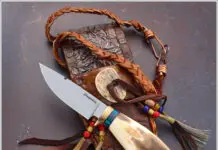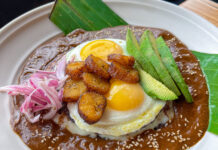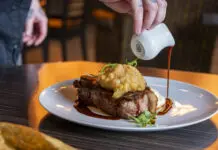The largest government funded nutrition program has generated a lot of buzz in corridors that revolve around political speech.
“Food stamp” use has grown exponentially over the past very few years, leading some to call it “dependency breeding,” while others cite the increased use as a sign of increased need in a growing economy. Debates rage over issues of abuse and mismanagement, fueled by anecdotal stories and such facets as a federal website that teaches Americans how to throw fun parties to encourage new participants in the taxpayer funded food assistance program.
And certainly there has been abuse of the system. Case in point: a Detroit area liquor store was shut down in October 2009 after it was discovered that the business served as a hub for one of the most bold-faced food stamp fraud operations in recent memory. Instead of using their assistance to obtain meat, vegetables and fruit, participants in the scheme exploited the system to obtain such nutritional staples as liquor, black-market painkillers and pornographic videos. Over the course of its roughly 30-month operation, the scheme cost taxpayers more than $130,000.
Closer to home, an Edmond merchant was sentenced in August 2011 to two years in federal prison and ordered to pay $326,307 after being convicted of purchasing food stamp benefits for cash at 50 cents on the dollar while debiting customers for the full amount of their purchases.
But despite publicized examples of a system that seems to be constantly flirting with total breakdown and assumedly ravaged by ne’er-do-wells, reality tells a tale of a modern operation determined to efficiently deliver nutritious food to increasing numbers of hungry mouths, while eliminating episodes such as the Detroit and Edmond schemes from the modern food stamp conversation. In fact, proponents point out that today’s incarnation of food stamps – the Supplemental Nutritional Assistance Program (SNAP) program – is harder to defraud than previous models, while at the same time providing the same safety net protections as its root program did almost 75 years ago.
SNAPping Into The Modern Era
The nation’s first food stamp program took effect on May 16, 1939, and continued through the spring of 1943. Originally, it required participants to buy one stamp at face price for some grocery items in order to also receive a separate stamp type to exchange for “surplus foods” as defined by the Department of Agriculture. Four years, $262 million and 20 million people served later the program was ended because the wartime economy was booming.
Eighteen years of studies, reports and proposals passed before, on May 29, 1961, participants in what came to be known as the Pilot Food Stamp Program (PFSP) first received benefits. The drive to make the program permanent first came on Jan. 31, 1964, at the request of President Lyndon B. Johnson. The Food Stamp Act of 1964 transitioned food stamp administration from the federal government to the states and expanded what foodstuffs it covered.
The 1964 legislation marked the birth of the program’s modern incarnation. Participation first topped the 500,000 milestone in April of 1965. By October of 1974, the tally stood at 15 million. This Act eliminated the purchase requirement and ended taxes on food stamp purchases.
The move to replace traditional paper stamps with the Electronic Benefit Transfer (EBT) system came with the 1996 passage of the Personal Responsibility and Work Opportunity Reconciliation Act, which mandated state-level implementation of EBT systems by Oct. 1, 2002. As of Oct 1, 2008, the federal food stamp program officially ceased to exist and was replaced with SNAP. The combined effects of electronic transaction monitoring and the program’s new public identity signaled an emphatic departure from an operation so often looked upon as a poster child for government inefficiency. Emerging on the other side was a program determined to prove itself worthy of the respect and trust of both recipient and non-recipient alike.
Paper Or Plastic?
While no security system is 100 percent fail safe, the implementation of EBT has been nearly universally lauded as a serious blow to criminals’ abilities to commit fraud. In removing the most readily identified and fraud-prone element from the program’s pre-2008 incarnation, EBT has virtually eliminated the ability to use food stamp benefits as an underground currency while assisting investigators in their efforts to bring fraudulent activity into the light of day.
A Tulsa-area grocery store manager who wished to remain anonymous agrees that EBT has hit its intended target. He explains that paper stamp fraud was relatively easy to commit and identify. Paper stamps, he says, were distributed in bound books and bore common serial numbers. Stamps bearing different serial numbers were hallmarks of suspicious activity, as were individual stamps torn from their books.
Transitioning from the tangible coupon to the realm of the modern banking transaction has proven the ideal complement to the food stamp program’s newfound identity in more ways than one.
“Besides being less psychologically embarrassing to some recipients, an EBT card is a better measure against fraud,” writes Shulamit Shvartsman on lawyers.com. “Compared with coupons, the card is less likely to be traded or sold because access to the benefits requires a personal identification number. Also, recipients are less likely to trade the card because it provides an entire month’s benefits.” Shvartsman concludes by adding “EBT cards make it easier to detect trafficking by creating an electronic paper trail that allows better tracking of spending.”
With point-of-sale fraud becoming less common since the dawn of the EBT era, Oklahoma Department of Human Services (OKDHS) spokeswoman Debra Martin explains that much of today’s fraudulent activity occurs before participants receive their first benefit disbursement. “The most prevalent types of SNAP fraud involve unreported income from employment or self-employment, unreported earned income, incorrect household composition, trafficking of SNAP benefits and receiving SNAP benefits in more than one state at the same time.”
Fraud by the Numbers
Surprisingly, OKDHS does not keep separate statistics detailing how much of a bite SNAP fraud takes out of Oklahoma taxpayers’ pockets annually. Martin says “Total state fiscal year (SFY) 2011 Oklahoma Inspector General (OIG) expenditures for the investigations unit, the internal audit unit, and the quality control unit combined was $5,423,000. This was approximately one percent of all OKDHS expenditures.”
Determining penalties for offenders isn’t as cut and dried as it may seem. “The penalties for obtaining food benefits and public assistance by fraud are determined, in part, by the dollar amount of the fraud overpayment,” Martin says. “When the dollar amount of food benefits and public assistance fraud is more than $500, this is considered a felony and is punishable by two years in prison and up to a $5,000 fine plus restitution. For instances of food benefits trafficking, a dollar amount of only $100 is considered a felony and is punishable by two years in prison and up to a $5,000 fine plus restitution.”
In SFY 2011, OKDHS received 5,628 food stamp fraud complaints. Of these, Martin says 3,449 were closed after preliminary investigations.
“The number of total complaints can be due to situations such as someone reporting that a person is getting SNAP benefits when they had a change in status, such as getting married or being hired at a job,” Martin says, adding that approximately 45 percent of reported cases turn out to be non-fraudulent eligibility issues. Recipients have 10 days to report any change in eligibility status.
In terms of actual legal action, OKDHS referred 231 fraud investigations to prosecutors, resulting in 32 prosecutions over the same period. “The remainder were handled administratively,” Martin says.
Fighting The Fight
Still, despite the intrinsic security benefits of the SNAP Program, preventing fraud and abuse takes constant vigilance.
“Prevention starts with the application process,” Martin says, “where clients are warned of the penalties for committing fraud.” OKDHS participates in a nationwide data sharing system known as the Public Assistance Reporting Information System, or PARIS. “It is a data match for dual receipt of SNAP and other benefits with the other 49 states, Washington D.C. and Puerto Rico.” PARIS gives OKDHS caseworkers access to information from both state and federal agencies to assist in verifying information provided by clients.
Acknowledging the fact that fraud can be committed by both beneficiaries and businesses alike, Martin says the OIG has worked to develop a database that boosts EBT’s usefulness in monitoring and fighting retailer-based SNAP trafficking.
In the face-to-face world, the dawn of the EBT era is proving a second line of defense up to the instant a transaction is completed. The grocery store manager we spoke to says his chain’s operating system is capable of identifying which items are legal under SNAP guidelines and which items are not. Beneficiaries enter their EBT card information into a cash register’s computer system and the cost of items allowed by the program are deducted from their balance and excluded items must be paid for by other means.
For The Good Apples
The fact that a few bad apples have a way of tainting the appearance of a bushel of otherwise pristine apples is an unfortunate fact of life. When it comes to food stamp fraud, a government beneficiary must make a dedicated effort to go bad. Despite the increasingly difficult nature of committing SNAP fraud, a determined minority of recipients will continue trying to find ways to cheat the system. However, thanks to modern technology and a little forward thinking on the part of government administrators, cheating the system is no longer the snap it once was.























